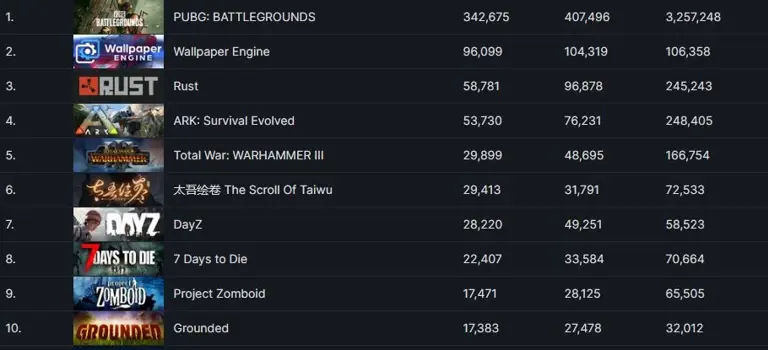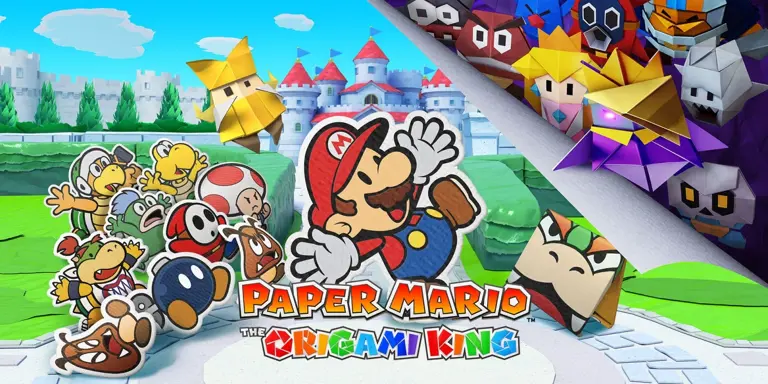Marketing a videogame is a funny thing.
Most marketers and product teams in other industries have the luxury of knowing what their product actually is before they start selling it, but trying to build hype for a videogame is like trying to sell a car before you've figured out how many doors it's going to have. Sometimes you can't even be certain how many wheels it's going to have, but your team seem confident they can deliver four.
The result is that when marketing a game, you spend a lot of time selling a vision of what your development crew hope will be reflected in the final product. It's always a moving target. Often, what a game will become evolves out of a series of iterations made by the team, and it doesn't always look identical to what you first planned. And making great games is difficult, even more so than most consumers realise. All told, games tend to change a lot during development.
Heck, nowadays, some games change a lot after they've come out too. With the rise of services that allow you to preview unfinished titles, and live service games that change dramatically after launch, the products themselves have never been as volatile and variable as they are today.
Consumers aren't always understanding of these various nuances - sometimes within their rights, and other times, unreasonably. When footage of Grand Theft Auto 6 leaked online, the reaction was fast, and often, furious. The video clips show an in-development version of the game, still presumably several years away from release, yet they were criticised for a lack of visual fidelity and smoothness - the kind that gamers expect from a finished product.
One hapless individual on Twitter even commented that "If you knew how game development goes, you’d know that visuals are one of the first things done" - a take so hilariously bad that the entire game development community responded with humour, posting clips and screenshots of what their successful games looked like at an early stage of production.
Now, Rockstar Games is Rockstar Games, and GTA is GTA. This game will almost inevitably sell a hundred million copies and become a huge success when it's released, by sheer recognition alone, and internet criticism is unlikely to derail their marketing plans. But the reaction (and others like it) is still concerning to marketers everywhere. What if footage of our game leaks? Or even more likely, what if we release footage of things which are still in development, and it doesn't "look good" enough?
You don't have to look far for more examples. Halo Infinite received significant backlash on a gameplay trailer that they specifically recorded, edited and released. The game wasn't finished, but fans were worried - and the reaction was a contributing factor to the game being delayed by a year.
And, as we highlighted in our State of Games report, many consumers are (arguably rightly) becoming more concerned about the final product living up to how it was advertised. Pandemic-related disruptions to working practices and a few high profile disasters (Cyberpunk 2077's launch, anyone?) have made everyone more keenly aware of the fierce backlash that a game can receive if the developers have "broken promises" which were made before release. Many Halo fans feel that the year delay Infinite received wasn't enough, with the game still struggling to live up to expectations another year later.
So how do we all, as marketers, walk this line? How do we sell changeable things which aren't done yet, while also protecting ourselves from a negative response to a fluctuating development cycle?
Most will still opt to share footage of some kind before release. Hype is a valuable tool in creating eventual sales, while wishlists and pre-orders can often be essential to keeping a project alive with publisher funding. It's hard to generate either of those without some gameplay videos. Here are the three primary strategies that studios will use:
Restricted, curated content
By far the most common approach, and considered industry standard, is to release tightly edited, carefully curated glimpses of your game. The majority of your marketing videos might be CGI designed to evoke the spirit of your game rather than being actual footage at all, and what little you do show, will be snippets taken from the "most beautiful" and most stable little corners of your mercurial project.
Done correctly, this produces a good, relatively safe outcome for your team. But there are pitfalls to avoid: Footage leaks could be theoretically damaging, your released material must simultaneously be impressive but also reflect your end product (which is easier said than done), and if you get the balance of CGI vs gameplay trailers wrong, some consumers will cry foul.
Openness, honesty, and careful articulation
Another approach which is growing in popularity is to be more open about development. While this method is the most honest, and has a lot of potential to generate highly invested and engaged fans, it does have risks. When you see games in Early Access or Xbox Game Preview, they're often taking this route, trying to be transparent about the development process. You'll also find this approach popular among networks of indie developers, such as the #indiedev community on Twitter, who regularly document their progress as their games get made.

But this approach isn't limited entirely to indie developers. Sometimes, even big publishers try it - such as EA Motive, who have been relatively open so far about their work on the Dead Space remake, even deliberately sharing early footage on Twitch. Crucially, despite the commitment to openness, there will also always be an element of curation involved - you still don't want to show people anything which is misleading, and careful wording is essential to ensure that viewers understand the nature of the footage they're watching.
Last weekend, The Finals, a new game from Embark launched a relatively public playtest (alongside a snazzy trailer). It's a sort of combination approach, because the trailer looks fantastic, and the gameplay test reveals that they're heading in the right direction, but still some way off delivering on the buttery smooth gorgeous trailer. Tellingly, playtesters (like me - for the record, I think the game has a lot of potential!) have to agree to not share any footage at this stage, perhaps because of a fear of what a casual audience might make of the discrepancies that exist at the moment.
Total secrecy
The third and final approach to inconstant products is what I like to call "doing a Nintendo", because they're the ones who do this the most. Often, Nintendo just don't share things at all, until they're done, or close to done. It's a luxury they can afford as one of gaming's biggest names, and their brand being synonymous with quality. Other than a few marquee titles, they have no desire to share information too soon and paint themselves into a PR corner.
Even as we speak, there are whole videogames that they have finished making that they haven't yet announced publicly. This allows them to provide a short turnaround from announcement to release, or even treat new game launches as a surprise. Their veil of total secrecy is sometimes pierced by leaks and rumours, but for the most part, this strategy really works for them. However, there have been times they've opted for secrecy but announced the games very far in advance, which many fans find frustrating.

Bethesda have also used a version of this technique with the Fallout series, only revealing Fallout 3 and 4 when they were a few months away from release. Elsewhere, Respawn released Apex Legends as a surprise with no prior announcement at all.
Being as secretive as you can be about a fickle product may be safer, and often a rational, logical choice. But on a grand scale, it does contribute to a lack of consumer awareness about how games are really made. In a perfect world, it would be better if everyone was savvy enough to understand that in-development footage is subject to change, and it would be better if marketing material was always transparent about that. In the absence of that perfect world, a little secrecy goes a long way.
For now, most marketers will continue to walk the line between the ever-changing, and the desirable.
Do you work in games marketing? Or perhaps you simply enjoy playing games, and have strong feelings about how they're marketed? If you've got thoughts about this article, we'd love to hear them. You can find us on Twitter and LinkedIn. Or, if you'd like a deeper conversation about our approach to marketing games, why not get in touch directly?


